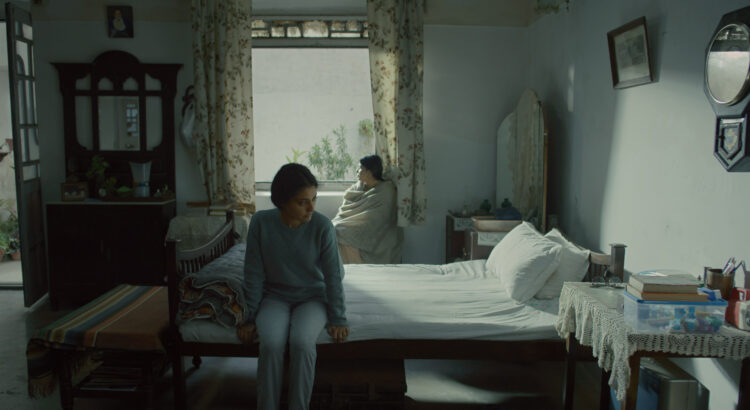7:15pm • Wednesday, Oct. 18, 2023 • State Theater
Shoebox was a thought-provoking film that stood out for its deliberate and introspective approach to storytelling, coupled with cinematography that beautifully captured a city in transition. The story, which took place in Allahabad on the cusp of its renaming, followed Mampu as she watched her father struggle to maintain his deteriorating movie palace in the midst of a health crisis. The narrative drew me slowly and quietly into a world where local politics intersected tragically with personal daily struggles.
One of the standout features of Shoebox was its cinematography. The film took its time, offering long, meditative shots of a city in the midst of transformation. These visuals provided a vivid backdrop to the characters’ lives, showcasing the beauty and decay of the urban landscape. Allahabad itself became a character in the film, reflecting the societal shifts and economic challenges faced by its inhabitants. Each frame was a work of art, and the cinematographer’s mastery was evident in every scene.
For me, the most meaningful aspect of the film was its understated portrayal of Mampu’s struggles to care for her father against a backdrop of corrupt politics. The characters’ daily lives were punctuated by the effects of political decisions made far beyond their reach. The powerlessness of the family was palpable, and their attempts to navigate a system riddled with corruption were both poignant and frustrating. Mampu’s experience reflected that of many who had to choose between protesting the injustices dealt to them and protecting themselves and those they cared for.
One of the most impactful moments in the film occurred during a simple yet profound scene involving a pack of cigarettes. This moment of intimacy between Mampu and her father became a lens through which the family’s dynamics were clarified. It revealed the unspoken connections and tensions that existed within the household, adding depth to their characters and relationships. This subtlety in storytelling was another of the film’s great strengths, showcasing the actors’ ability to convey emotions without the need for grandiose displays of drama.
In conclusion, Shoebox was a mesmerizing and quietly powerful film that invited viewers to contemplate the intersection of personal and political challenges. Its deliberate pacing and exquisite cinematography created a sense of immersion in a world where beauty and decay coexisted. The film’s understated storytelling style allowed the audience to connect deeply with the characters. Shoebox was a masterclass in subtlety and a testament to the impact of quiet moments in cinema. It was a poignant exploration of the human spirit in the face of daunting challenges, leaving a lasting impression long after the credits rolled.


